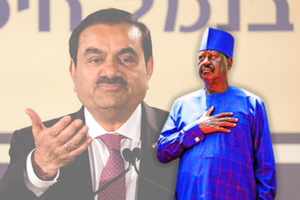Italy, France most visited States by Kenya officials

Trocadero Gardens and Eiffel Tower in Paris, France.
Italy and France have emerged as key attractions for government officials amid growing concerns that most of the trips do not give taxpayers value for money.
A report by the Controller of Budget (CoB) said the two European nations were some of the most visited by dozens of officials from Ministries, Departments, and Agencies (MDAs) in the financial year that ended in June 2024.
Government officials have repeatedly come under criticism for numerous trips abroad such as benchmarking and training, with taxpayers getting little or no value from the travel. The officials burnt Sh9.19 billion on the item in the year that ended June 2024.
Italy and France are two of the European countries that attract the highest number of visitors every year largely due to their historic buildings, culture, and sunny beaches.
“The Controller of Budget noted the following issues; multiple trips to the same destinations by different MDAs suggest a lack of coordination, leading to redundant travel. For example, numerous departments travelled to Italy and France for similar purposes, incurring avoidable costs,” Ms Margaret Nyakang’o, the CoB says.
“The analysis indicates that large delegations were common. This indicates non-adherence to the circular’s emphasis on minimising delegation sizes and calls for more robust controls to enforce adherence.”
Data by French multinational insurance corporation, Axa S.A shows that France is the most visited European country with 81.4 million tourists while Italy is third at 46.1 million visitors.
Iconic structures such as the Louvre and Eiffel Tower, skiing in the Alps, and the weather and beaches of the French Riviera are major attractions in France.
Tourists flock to Italy mainly to catch sights of iconic structures such as the Palatine Hill, the Baths of Diocletian, St Peter’s Basilica, and the Trevi Fountain as well as the warm weather.
Head of Public Service Felix Koskei last year issued a circular freezing non-essential travel, capped delegations headed by a Cabinet Secretary to four people and those led by Principal Secretaries and CEOs of State Corporations to three people.
Additionally, Mr Koskei barred security personnel and personal assistants of the officials from foreign trips except for top officials with disabilities.
The circular also capped the cumulative days at 45 per year and 15 per quarter. The officials are also barred from being away for more than seven days per trip.
But the government officials defied Mr Koskei and formed part of the millions of visitors who frequent France and Italy every year.
Foreign travel offers thousands of government officials a chance to fatten their monthly take-homes due to the huge per diems they are entitled to for every trip.
Government officials already spent Sh1.095 billion on trips abroad between July and September and it remains to be seen whether the spending will surpass Sh9.19 billion spent on the item in the 2023/24 year.
Dr Nyakang’o says that the government should set up a dedicated unit that will coordinate all foreign trips for government officials, saying this can significantly help cut wastages in the form of duplicated trips.
“The Government should establish a centralised unit to review and approve all foreign travel across MDAs to prevent duplication and redundancies. This body would ensure that similar trips by different departments are consolidated or eliminated, reducing unnecessary expenditure,” Dr Nyakang’o says.





